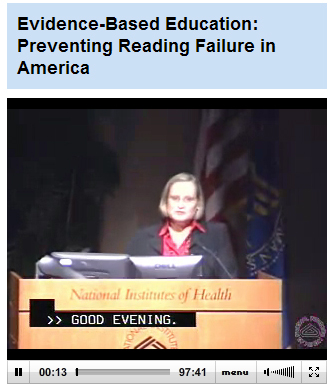By Joanne Lara, MA
 Autism Movement Therapy is a new 2-hour online video-based continuing education (CE/CEU) course that was developed in partnership with Joanne Lara, MA of Autism Movement Therapy, Inc., a nonprofit organization focused on serving the autism community by supporting autism research, environmental organizations, and providing community outreach. Joanne Lara is an adjunct professor at National University in the department of Special Education in Los Angeles, California. She earned her master’s in Special Education; Moderate/Severe & Multiple Disabilities from California State University, Northridge and a B.A. in Dance from the University of South Florida. She holds a California Moderate/Severe Education Specialist K-12 teaching credential and taught in the Los Angeles Unified School District for over 10 years, where she worked exclusively with students with autism.
Autism Movement Therapy is a new 2-hour online video-based continuing education (CE/CEU) course that was developed in partnership with Joanne Lara, MA of Autism Movement Therapy, Inc., a nonprofit organization focused on serving the autism community by supporting autism research, environmental organizations, and providing community outreach. Joanne Lara is an adjunct professor at National University in the department of Special Education in Los Angeles, California. She earned her master’s in Special Education; Moderate/Severe & Multiple Disabilities from California State University, Northridge and a B.A. in Dance from the University of South Florida. She holds a California Moderate/Severe Education Specialist K-12 teaching credential and taught in the Los Angeles Unified School District for over 10 years, where she worked exclusively with students with autism.
“Autism Movement Therapy® (AMT),” according to Lara, “is an emerging therapy that combines movement and music with positive behavior support strategies to assist individuals with Autism Spectrum Disorder (ASD) in meeting and achieving their speech and language, social and academic goals. Its purpose is to connect left and right hemisphere brain functioning by combining patterning, visual movement calculation, audile receptive processing, rhythm and sequencing into a ‘whole brain’ cognitive thinking approach that can significantly improve behavioral, emotional, academic, social, and speech and language skills.”
The course, Autism Movement Therapy, is presented in two parts. Part 1 summarizes what is known about the brain functioning of individuals with ASD and illustrates how participation in dance, music and the arts can render the brain more amenable to learning social and language skills. Part 2 is a documentary created by Joanne Lara – Generation A: Portraits of Autism and the Arts, which spotlights – from a strikingly positive perspective – the challenges and accomplishments of eight individuals with ASD.
Generation A is a documentary about young people with autism using creative therapies and the arts to reach their highest potential. The perspective taken in the video is that autism can be viewed not only as a disability but also as a gift. Through these gifts, individuals are able to make pathways into their communities. The goal is to help families with children on the spectrum and the public-in-general to envision a better quality of life for individuals with autism.
Viewers are led through the film by the internationally-renowned Dr. Temple Grandin (Professor at the Colorado State University, best-selling author, and the subject of the recent award-winning HBO movie) and Dr. Stephen Shore (Professor of Special Education at Adelphi University in N.Y. whose expertise is the therapeutic aspects of music and movement on autism.) They are both highly evolved individuals who, as children, were themselves diagnosed with autism. They are inspirational role models who defied the low expectations placed on them at an early age by “professionals” (during the 50s). In both cases, their parents chose to ignore the recommendation to institutionalize, and instead searched successfully for more creative and humane solutions such as those presented in the film.
Those who complete this course will learn to identify the parts and functions of the brain relevant to individuals with Autism Spectrum Disorder (ASD), explain ways in which music and independent movement can help strengthen the four lobes of the brain, identify the elements involved in the program design and intent of Autism Movement Therapy®, and name ways in which the arts can play a positive role in the lives and functionality of individuals with ASD.
About Professional Development Resources, Inc.
Professional Development Resources is a Florida nonprofit educational corporation founded in 1992 by licensed marriage and family therapist Leo Christie, PhD. The company, which is accredited by the American Psychological Association (APA), the Association of Social Work Boards (ASWB), the National Board for Certified Counselors (NBCC), the American Speech-Language-Hearing Association (ASHA), the American Occupational Therapy Association (AOTA), and the Commission on Dietetic Registration (CDR) – as well as many other national and state boards – has focused its efforts on making accredited continuing education units more cost-effective and widely accessible to health professionals by offering online home study coursework. Its current expanded curriculum includes a wide variety of clinical topics intended to equip health professionals to offer state-of-the art services to their clients.



![Video2 Using structural MRI to map the functional anatomy of language and reading [electronic resource] / Cathy Price.](http://pdresources.files.wordpress.com/2011/08/video2.jpg?resize=330%2C394)

